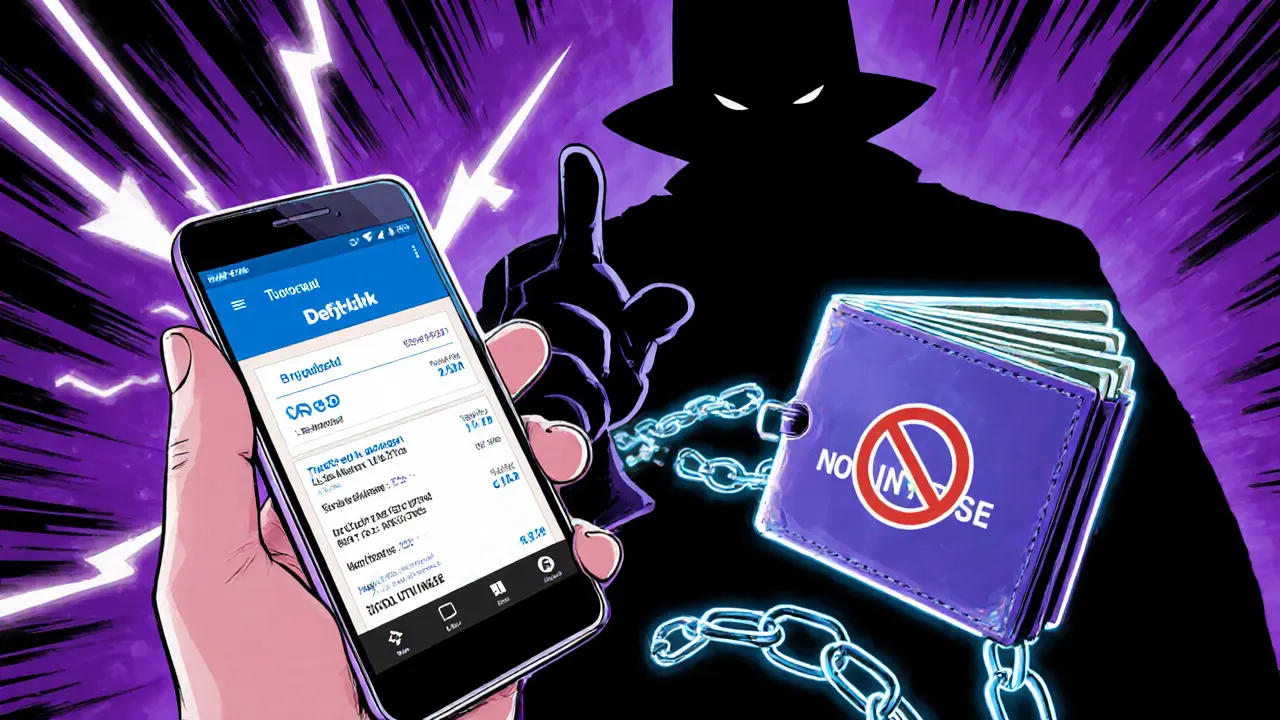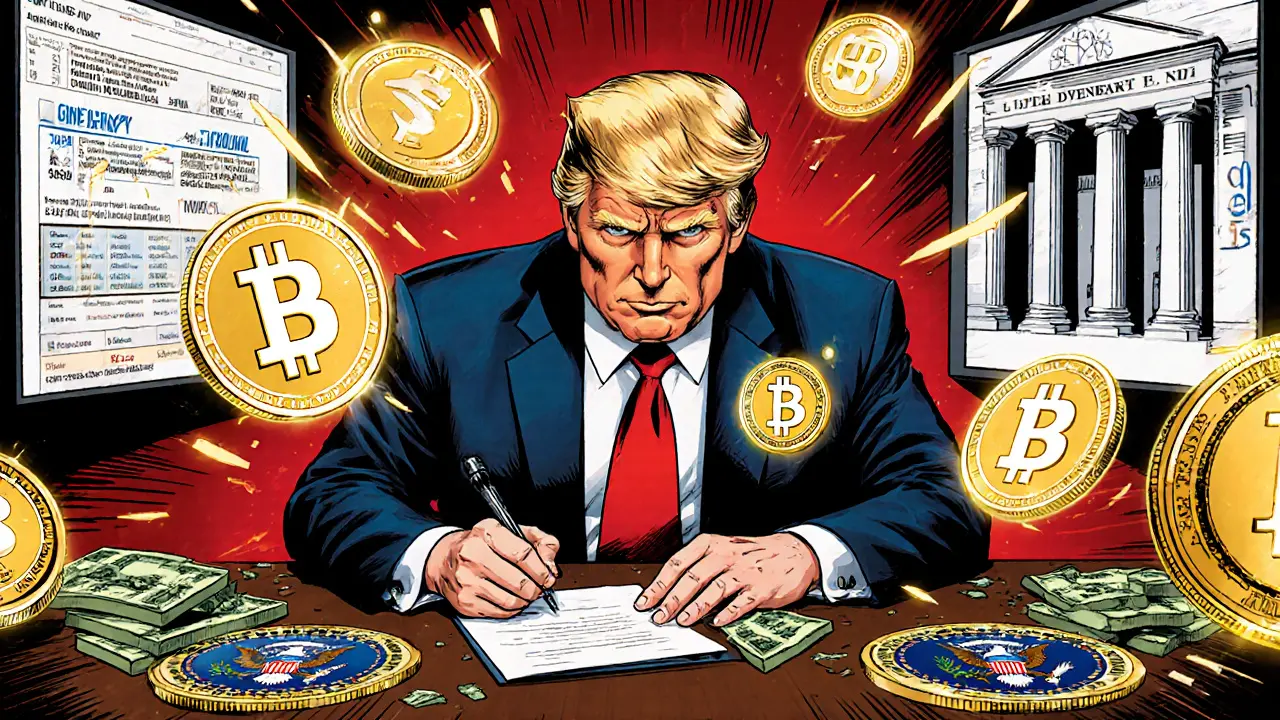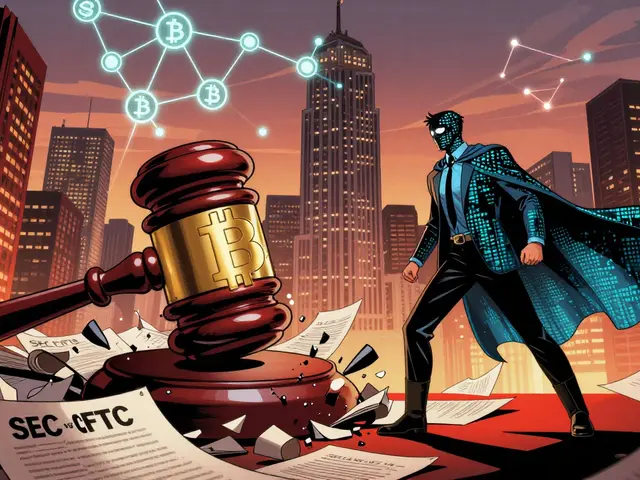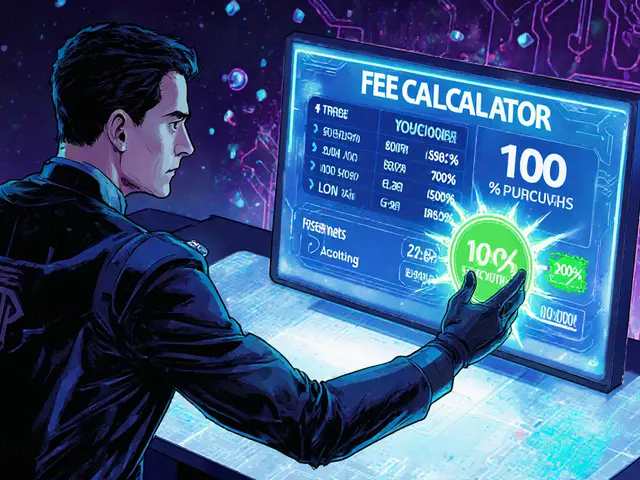United States Crypto Regulation Framework: What You Need to Know in 2025
Stablecoin Reserve Calculator
Calculate Required Reserves
The GENIUS Act requires stablecoin issuers to maintain 100% reserve backing for all stablecoins in circulation. Calculate the required reserve amount below.
Result
Regulatory Thresholds
Issuers with over $10 billion in stablecoin supply fall under federal regulation (Treasury/FinCEN). Smaller issuers are regulated by individual states.
Current market cap: USDC $32.7B (Oct 2025)
This calculator demonstrates the reserve requirements under the GENIUS Act. Note that the actual compliance process includes additional requirements like monthly reserve reports, AML/KYC systems, and the ability to freeze assets on command.
The United States finally has a real federal crypto regulation framework - and it’s not what most people expected. On July 18, 2025, President Donald J. Trump signed the GENIUS Act - the Guiding and Establishing National Innovation for U.S. Stablecoins Act - turning years of regulatory chaos into a structured, if narrow, system. This isn’t about banning crypto or making Bitcoin legal tender. It’s about controlling one thing: payment stablecoins. And it’s already changing how money moves online.
What the GENIUS Act Actually Does
The GENIUS Act doesn’t regulate Bitcoin, Ethereum, or altcoins. It focuses only on payment stablecoins - digital tokens pegged to the U.S. dollar, like USDC or USDT - that people use to buy, sell, or transfer value without touching banks. Before this law, stablecoin issuers operated in a gray zone. Now, they’re legally required to follow strict rules.Here’s what’s mandatory:
- 100% reserve backing - every dollar of stablecoin in circulation must be matched with U.S. dollars or short-term U.S. Treasury bonds.
- Monthly public reports showing exactly what’s in those reserves.
- Registration with FinCEN as a financial institution under the Bank Secrecy Act.
- Full AML/KYC systems - same as banks - to track users and report suspicious activity.
- The ability to freeze assets on command from regulators.
- Prohibition on paying interest or yield to stablecoin holders.
These rules are designed to prevent another TerraUSD collapse. They also give stablecoin holders priority over all other creditors if the issuer goes bankrupt. That’s a big deal. It means if Circle or Paxos ever fails, you get your money back before anyone else.
The Federal-State Split
This isn’t a single federal system. It’s a two-layer patchwork.Issuers that print more than $10 billion in stablecoins fall under federal oversight - mainly the Treasury and FinCEN. Smaller issuers? They’re regulated by individual states. New York, California, Texas - each can set their own rules for companies under that $10 billion threshold, as long as they meet the federal baseline.
This creates headaches. A small stablecoin startup in Wyoming might face different paperwork than one in Florida. And if a company grows from $9 billion to $11 billion in issuance? They suddenly have to restructure their entire compliance team overnight. Experts like Georgetown Law’s Hilary Allen warn this dual system invites confusion and enforcement gaps.
Why No Interest? The Banking Lobby’s Win
One of the most controversial parts of the law? You can’t earn interest on your stablecoins.That’s not a technical rule - it’s a political one. Traditional banks were terrified. If you could earn 5% on USDC, why keep your money in a savings account paying 0.5%? Banks called it disintermediation - and they pushed hard to stop it.
The GENIUS Act banned issuers from paying interest. But here’s the loophole: third-party platforms - like Coinbase, BlockFi, or even crypto apps - can still offer rewards or yield programs. So you can’t earn interest from Circle, but you can from a DeFi app or an exchange.
That’s exactly what’s happening. MIT’s Neha Narula says this is backfiring. People are moving their stablecoins to unregulated DeFi protocols just to earn yield. And those platforms? No AML, no freezing, no oversight. The law meant to reduce risk - but it might be increasing it.

What About Bitcoin and Ethereum?
The GENIUS Act doesn’t touch them. That’s intentional. The SEC still decides on a case-by-case basis whether a token is a security. If you’re holding ETH, SOL, or ADA, you’re still in the gray zone.The SEC’s Spring 2025 Regulatory Agenda lists six new rule proposals targeting digital assets - including updates to dealer definitions, custody rules, and trading platforms. But none of them classify Bitcoin as a commodity or Ethereum as non-security. That’s left for future decisions.
So while stablecoin issuers now have clear rules, Bitcoin traders still don’t know if they’re breaking the law by using a U.S.-based exchange. Federal Reserve Governor Christopher Waller called this a “critical vulnerability.” Critics say it’s a recipe for regulatory arbitrage - where projects avoid stablecoin status just to dodge the rules.
How the Market Is Responding
The impact is already visible.USDC’s market cap hit $32.7 billion in October 2025 - up 37% since the law passed. Fidelity saw a 214% jump in digital asset custody clients. JPMorgan launched its Onyx Digital Assets platform in March 2025, becoming the first major bank to offer custody under the new rules.
But it’s not all smooth sailing. Tether’s CEO called the reserve rules “excessively restrictive.” Coinbase’s Brian Armstrong praised the clarity but warned that monthly reserve disclosures are crushing small issuers. Deloitte estimates compliance costs between $2-5 million per year for smaller players.
Chainalysis found that 78% of issuers needed six months or more to build systems that could freeze assets and share data with regulators. That’s not just expensive - it’s slow. And in crypto, slow means losing market share.

How This Compares to the Rest of the World
The U.S. didn’t copy Europe. The EU’s MiCA law regulates everything - from Bitcoin to NFTs to stablecoins - with clear categories and rules. China banned crypto entirely. Singapore lets firms operate with light oversight.The U.S. took a middle path: focus on the biggest risk - stablecoins - and leave the rest for later. That’s smart in some ways. It avoids overreach. But it also leaves 80% of the crypto market unregulated.
As a result, 23 major crypto firms that once considered the U.S. as their base moved to the EU or Switzerland. The 2025 Global Blockchain Benchmarking Study ranks the U.S. third in regulatory clarity - behind Singapore and Switzerland. The EU’s MiCA is now attracting more global talent.
What’s Next? The Loopholes and Coming Changes
The GENIUS Act isn’t the end. It’s the beginning.The CFTC plans to propose rules for crypto derivatives by December 2025. The SEC will release guidance on security token offerings by Q1 2026. And Congress is already working on fixes.
Representative French Hill introduced the Stablecoin Innovation Preservation Act on October 22, 2025 - a bill to create a legal path for interest-bearing stablecoins. The Treasury Department’s Office of Financial Research warned in November 2025 that the interest ban is pushing yield-seeking activity into unregulated DeFi - a direct threat to financial stability.
The Presidential Working Group on Digital Asset Markets will release its first full assessment on March 1, 2026. That report could trigger major changes - especially if DeFi usage keeps growing while regulated stablecoin adoption stalls.
Bottom Line: Clarity, But With Gaps
The U.S. crypto regulation framework in 2025 is the most concrete system the country has ever had. For stablecoin issuers, it’s a roadmap. For banks, it’s a lifeline. For everyday users, it’s safer money.But it’s not a full solution. Bitcoin and Ethereum still live in regulatory limbo. The interest ban is pushing risk offshore. And the federal-state split makes compliance a nightmare for small players.
If you’re a stablecoin issuer, you now know exactly what to do. If you’re a trader, investor, or just someone using crypto to send money - you’re still waiting for the next chapter. The rules are clearer than ever. But the game isn’t over.









This law is a joke and everyone knows it
They ban interest so banks don't lose customers but then let DeFi apps do it anyway
So now your money's safer in some anonymous smart contract than in a regulated stablecoin
What even is the point anymore
So let me get this straight - the government spends two years crafting a law to regulate stablecoins, then immediately creates a loophole so big you could fly a Boeing 747 through it
Brilliant. Just brilliant.
They didn’t solve the problem - they just moved it to the wild west and called it innovation
The GENIUS Act represents a classic case of regulatory capture disguised as market stabilization
The interest ban isn't a technical safeguard - it's a rent-seeking mechanism designed to preserve the fractional reserve banking oligopoly
By artificially suppressing yield on regulated stablecoins, the state incentivizes capital flight into unregulated DeFi protocols - precisely the systemic risk the legislation purports to mitigate
This is not regulation - it's economic sabotage with a compliance checklist
I get why people are frustrated, but let’s not forget - this is the first real step the U.S. has taken
Before this, stablecoin issuers were basically running unlicensed banks
Yes, the interest ban is messy, and yes, the federal-state split is a nightmare
But at least now there’s a baseline
And if DeFi is growing because of it, maybe that’s a sign we need better tools - not more bans
Look - I’ve been in this space since 2017
I’ve seen every regulation come and go like a bad trend
But this one? It’s actually changing behavior
Companies are hiring compliance officers, not just devs
Exchanges are finally doing KYC properly
Even Tether is publishing reserve reports now
It’s not perfect - but it’s real
And real progress, even slow, is better than the chaos we had
Anyone else notice how the big banks are suddenly all cozy with crypto now?
JPMorgan’s Onyx platform? Fidelity’s custody surge?
They didn’t care until the government gave them a license to play
Now they’re all ‘we support innovation’ - but only if it’s under their control
Feels like they turned the tables on the disruptors and said ‘you’re not banned anymore - you’re ours’
This is all a distraction
They’re not regulating crypto
They’re preparing the ground for a digital dollar
Stablecoins are just the Trojan horse
Once everyone’s used to digital money tied to the dollar, they’ll roll out the CBDC
And then you won’t be able to move your money without government approval
They’ve been planning this for years
Don’t be fooled by the ‘clarity’
Why are people acting like this is progress
They ban interest so banks win
They make compliance so expensive small players die
They let DeFi run wild because they don’t care
And now they’re proud of themselves
What a joke
The only thing this law did was kill competition and hand power to the same old players
Call it regulation if you want
I call it corporate capture
Wait - so you’re telling me that a $9B stablecoin issuer can operate under state rules… but as soon as they hit $10B… they’re suddenly subject to federal oversight, full FinCEN registration, mandatory asset freezing, monthly disclosures, AND they can’t pay interest… but third parties can still offer yield…?
And you think this is a coherent system?
It’s not a framework - it’s a bureaucratic minefield with a side of cognitive dissonance.
Who approved this?
Did they even read it?
Because if they did, they’re either incompetent… or complicit.
Let’s be honest - this law was written by lobbyists with Bloomberg terminals and Ivy League law degrees
It looks like a solution - but it’s just a way to make sure the same institutions that controlled money in 2020 still control it in 2025
They didn’t fix crypto
They just made it more expensive to play
And the people who were supposed to benefit? Still stuck waiting for the next chapter
I think we’re all missing the bigger picture here
Yes, the law has flaws
Yes, the interest ban is problematic
But the fact that we’re even having this conversation - that regulators, banks, and crypto firms are all sitting at the same table - that’s new
It’s messy, it’s imperfect, but it’s dialogue
And dialogue is how we build something that lasts
Let’s not throw the baby out with the bathwater - let’s keep pushing for the next version